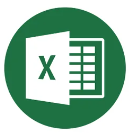Ceiling: Excel Formulae Explained
Key Takeaway: The CEILING function in Excel is a mathematical function that rounds a number up to a specified multiple of significance. This is useful in scenarios where specific values are required, such as financial calculations or inventory management. The syntax of the CEILING function consists of two main parameters: the number to be rounded…
